Name Jean, Duke | ||
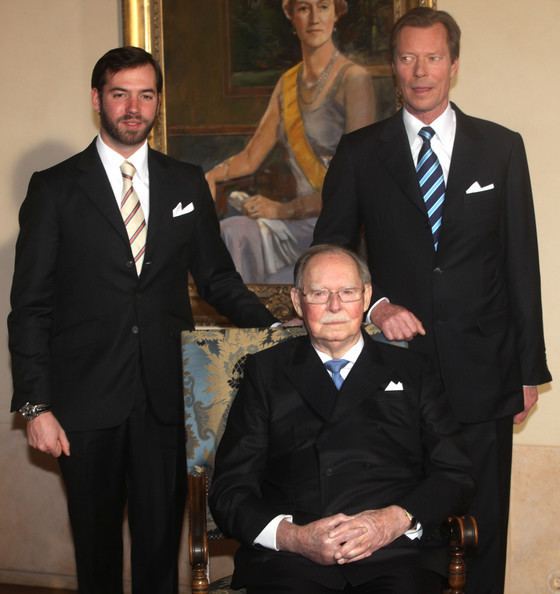 | ||
Reign 12 November 1964 – 7 October 2000 Consort Princess Josephine Charlotte of Belgium (m. 1953) Issue Archduchess Marie Astrid of AustriaHenri, Grand Duke of LuxembourgPrince JeanPrincess Margaretha of LiechtensteinPrince Guillaume Role Former Grand Duke of Luxembourg Spouse Princess Josephine Charlotte of Belgium (m. 1953–2005) Children Henri, Grand Duke of Luxembourg Parents Charlotte, Grand Duchess of Luxembourg, Prince Felix of Bourbon-Parma Siblings Princess Elisabeth, Duchess of Hohenberg, Alix, Dowager Princess of Ligne Similar People Henri - Grand Duke of L, Princess Josephine Charlotte, Charlotte - Grand Duchess, Maria Teresa - Grand Du, Prince Jean of Luxembourg | ||
Jean (given names: Jean Benoît Guillaume Robert Antoine Louis Marie Adolphe Marc d'Aviano; born 5 January 1921) reigned as Grand Duke of Luxembourg from 1964 until his abdication in 2000.
Contents
- Early life
- Second World War
- Reign
- Retirement
- Marriage and family
- Titles and styles
- Change of dynastic titles
- Luxembourgish honours and awards
- Foreign honours and awards
- References
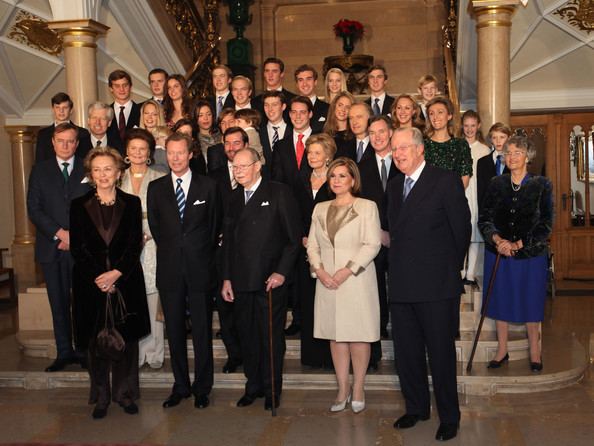
Jean was the eldest son of Grand Duchess Charlotte and Prince Felix of Bourbon-Parma. Jean's primary education would be in Luxemboug initially before attending Ampleforth College in England. In 1938, he would officially be named Hereditary Grand Duke as heir to the throne of Luxembourg.
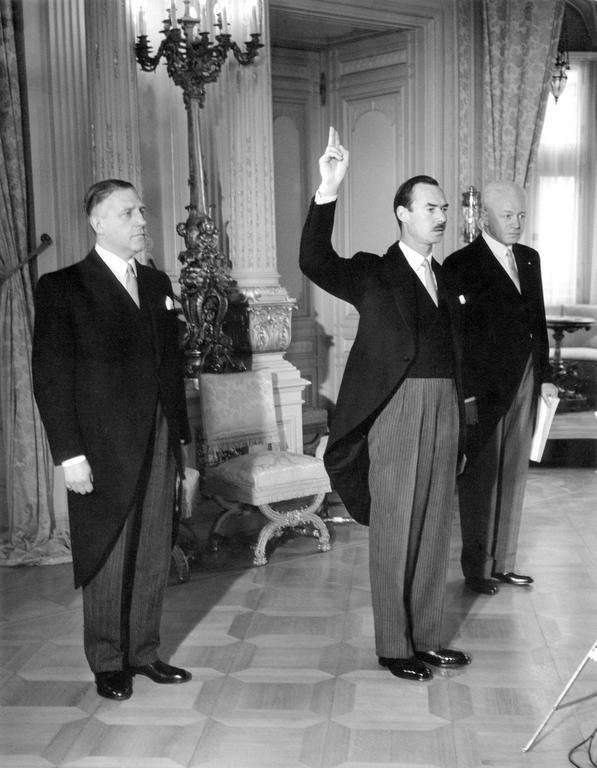
While Luxembourg was occupied by Germans during the Second World War, the grand ducal family was abroad in exile. Jean would study at the Université Laval in Quebec City. Jean later volunteered to join the British army's Irish Guards in 1942 and after graduating from the Royal Military Academy Sandhurst, would receive his commission in 1943. He participated in the Normandy landings, the Battle for Caen and joined the Allied forces in the liberation of Luxembourg. From 1984 until 2000, he was made colonel of the Irish Guards.
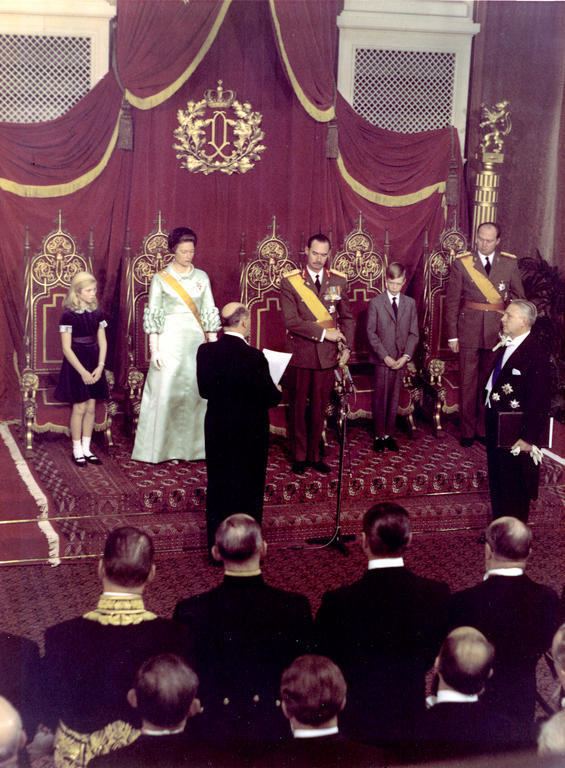
On 9 April 1953, Jean married Princess Joséphine-Charlotte of Belgium with whom he would have six children. On 12 November 1964, Grand Duchess Charlotte abdicated and Jean succeeded her as Grand Duke of Luxembourg. He would reign for 36 years before he himself abdicated on 7 October 2000 and was succeeded by his son, Grand Duke Henri.
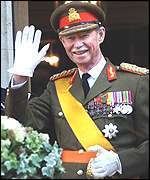
Early life
Jean was born on 5 January 1921, at Berg Castle, in central Luxembourg, the son of Grand Duchess Charlotte and of Prince Félix of Bourbon-Parma. Among his godparents was Pope Benedict XV, who gave him his second name. He attended primary school in Luxembourg, where he continued the initial stage of secondary education. He completed secondary school at Ampleforth College, a Roman Catholic boarding school in the United Kingdom. Upon reaching maturity, on 5 January 1938, he was styled 'Hereditary Grand Duke', recognising his status as heir apparent.
Second World War
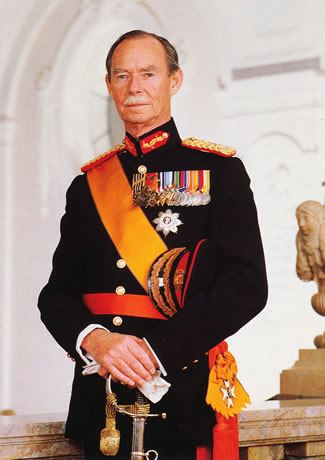
On 10 May 1940, Germany invaded Luxembourg, beginning a four-year occupation. Having been warned of an imminent invasion, the Grand Ducal Family escaped the previous night. At first, they sought refuge in Paris, before fleeing France only weeks later. The Grand Ducal Family sought refuge in the United States, renting an estate in Brookville, New York. Jean studied Law and Political Science at Université Laval, Quebec City.
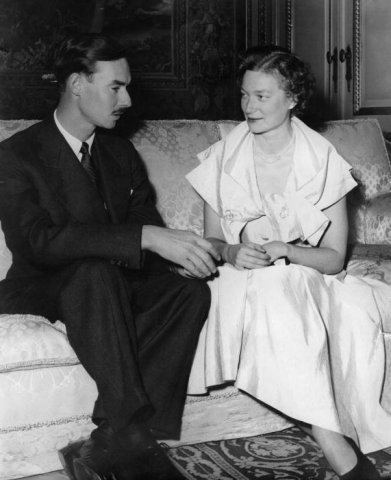
He joined the British Army as a volunteer in the Irish Guards in November 1942. After receiving officer training at the Royal Military College at Sandhurst, Jean was commissioned as a Lieutenant in July 1943, before being promoted to captain in 1944. He landed in Normandy on 11 June 1944, and took part in the Battle for Caen and the liberation of Brussels. On 10 September 1944, he took part in the liberation of Luxembourg before moving on to Arnhem and the invasion of Germany. After the war, from 1984 until his abdication, he served as Colonel of the Regiment of the Irish Guards, often riding in uniform behind Queen Elizabeth II during the Sovereign's Birthday Parade.
Reign
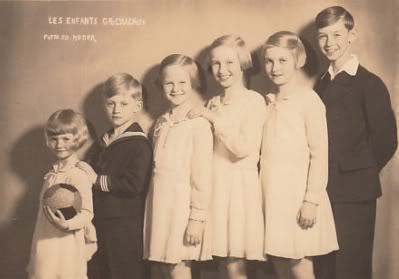
He was named Lieutenant-Representative of the Grand Duchess on 28 April 1961.
He became Grand Duke when his mother, the Grand Duchess Charlotte, abdicated on 12 November 1964. The same day, he was made a General of the Luxembourg Army.
Grand Duke Jean abdicated on 7 October 2000, and was succeeded on the throne by his son Henri.
Retirement
Grand Duke Jean now lives at Fischbach Castle. On 27 December 2016, Grand Duke Jean was hospitalized due to bronchitis and was discharged from hospital on 4 January 2017, a day before he celebrated his 96th birthday. The Grand Duke Jean Museum of Modern Art (Mudam) bears his name. At age of 96, he is the oldest and the longest-living monarch or former monarch in the world.
Marriage and family
He was married in Luxembourg on 9 April 1953 to Joséphine-Charlotte of Belgium, daughter of Leopold III, King of the Belgians. They had three sons and two daughters: Princess Marie-Astrid (born 1954), Grand Duke Henri (born 1955), who ascended to the grand ducal throne in 2000, Prince Jean (born 1957), Princess Margaretha (born 1957), and Prince Guillaume (born 1963).
Titles and styles
His full title is "by the Grace of God, Grand Duke of Luxembourg, Duke of Nassau, Count Palatine of the Rhine, Count of Sayn, Königstein, Katzenelnbogen and Diez, Burgrave of Hammerstein, Lord of Mahlberg, Wiesbaden, Idstein, Merenberg, Limburg and Eppstein." Many of the titles are held without regard to the strict rules of salic inheritance.
Change of dynastic titles
Jean renounced the titles of the House of Bourbon-Parma for himself and his family in 1986 when his eldest son, then-Hereditary Grand Duke Henri married Maria-Theresa Mestre. The reason for this was that the Duke of Parma, Carlos Hugo, ruled the marriage unequal in 1981, as well as the marriage of Prince Jean to Hélène Suzanna Vestur in 1987, for which he had renounced his rights to Luxembourg in 1986. It is not known if the marriage of Prince Guillaume was seen by Carlos Hugo as equal.
The Arrêté Grand-Ducal (Grand Ducal decree) of 21 September 1995 established that the title of Prince/Princesse de Luxembourg is reserved for the children of the sovereign and the heir to the throne. It also stated that the descendants in male lineage of the sovereign should be styled as Royal Highnesses and titled Prince/Princess of Nassau and that the descendants of unapproved marriages should be styled as Count/Countess of Nassau.
